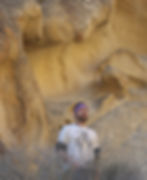Owyhee Land Acknowledgement: Bannock-Shoshone and Northern Paiute Ancestral Land
- Sammy Castonguay
- Feb 16, 2021
- 2 min read
Updated: Jul 22, 2022


Patulaykaspa or "stands beside place" is the Sahaptin language word for Malheur Butte, which is just west of Ontario, Oregon (home base for Friends of the Owyhee). The French named this river, and then subsequently the butte and county, Malheur or "misfortune". But to the land's first people, the Four Rivers region—where the Boise, Payette, Malheur, and Owyhee enter the Snake River—was a region of peace and trade. Slightly upriver from the confluence waters of the Malheur and Snake was called Poxpoxnime or "powder place", likely honoring the essence of a peaceful meeting place. I think about this often when I visit the Oregon State Park-owned Ontario Recreation Site or kayak the Malheur River Water Trail the city of Ontario is promoting.
Do you think of the land's first people when you visit places? If you did not already, please consider adding this acknowledgment to the public land you are visiting. Before this land became American public land, this was—and still is—Native American land. Use this map to find the ancestral territories of many North American (Turtle Island) Tribes, so you can acknowledge those people.
Friends of the Owyhee is making it commonplace at our events to share this acknowledgment: before hikes, Zoom meetings, and board meetings. After our board retreat last August, Noah made this great video that begins with a nice land acknowledgment.
Acknowledging the land's first people is not to undercut or replace the settler history of the region. This history is more well-known, with a lot of artifacts and literature on the subject. During trips to Succor Creek, we often discuss the Dutcher homestead and the book Our Homestead in the Canyon by Ida Dutcher. The practice of acknowledging the ancestral Tribes and the fact they were forcibly removed from this land is an enhancement. Natural history, settler history, and Indigenous history—together.

Altogether, much information—such as location names, sacred locations, or legends—has been lost or remains with very few Tribal elders. I learned the names of the local butte in this book: Caw Pawa Laakni / They are Not Forgotten. Another phenomenal book and oral history resource is The Legends of the Northern Paiute as told by Wilson Wewa andcompiled by James Gardner.
On February 16th, the Oregon Natural Desert Association is hosting a special webinar with Wilson Wewa "Hope of Wild Places" (if recorded, I will post it here later). Also a part of this webinar is Jason Houston will talk about the "Owyhee Project" (working title).
As you walk onto the land next, acknowledge the land's first people.

Sammy grew up in Faith, South Dakota not far from the Cheyenne-Eagle Butte reservation. From a young age, he could see the disparity many folks on the reservation experienced. For over a decade, his sister has worked for the Yurok Tribe of northern California. In early college as a geologist and public land enthusiast, to always seek tribal permissions to show his respect for the land's peoples, but also to avoid areas that are sacred (especially when wielding a rock hammer!). Ever since, he attempts to contact the nearest reservation to the ancestral territories he is visiting.

